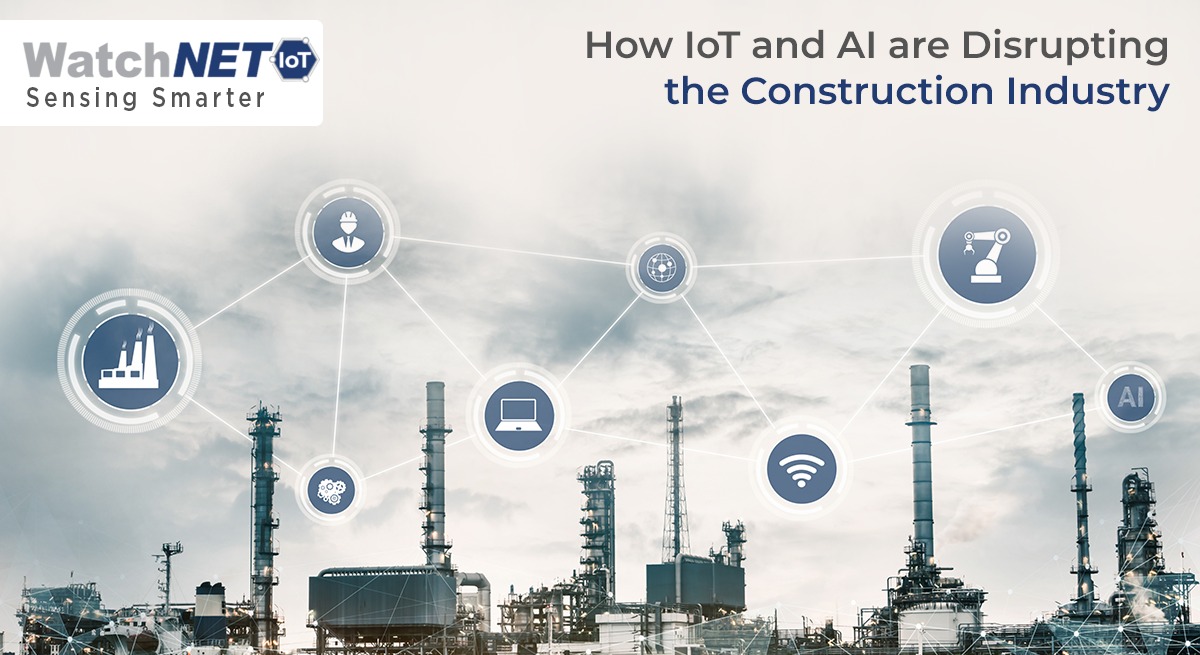
In a rapidly urbanizing world, the construction industry innovation is critical to aid in addressing urban sustainability changes. In recent decades, the construction industry continued to be one of the low innovation sectors with limited productivity and growth. This is evident as it is one of the least digitalized industries in the world in comparison to the manufacturing, retail and telecommunication sectors. The fundamental rules and characteristics of the construction industry have contributed to slow performance and growth.
The intervention of IoT and Artificial Intelligence
In response to the construction industry’s slow growth, companies are beginning to explore the applications of IoT and Artificial Intelligence to streamline processes and increase productivity. Artificial intelligence powered by IoT is a dynamic technology with a range of capabilities which are beginning to become apparent in all industries nowadays. The benefits of using this technology include prevention of cost overruns, improvements in site safety, increased management efficiency of project plans and productivity growth on sites.
Through the implementation of the Internet of Things and Artificial Intelligence, the construction industry can be assisted to automate operations and digitalise processes to improve productivity, safety, and quality. This independence will make the development of buildings more evidence-based and depend less on implicit knowledge and reduce unforeseen changes that may impact time and cost.
To understand the current state of AI and IoT in the construction industry, it is a necessity to identify the major subfield of it that includes
- Machine Learning
It is concerned with the design and use of computer programs to learn from experience or past data for the purpose of modelling, control and prediction using statistical techniques. It may be of three types namely
- supervised machine learning
- Unsupervised machine learning
- Reinforcement learning
- Computer vision
It is a multidisciplinary field concerned with the artificial simulation of the human visual systems, processing them using algorithms and analyzing images to facilitate decision making.
- Automated planning and scheduling
It is a subfield that enables intelligent systems to achieve desired goals or objectives by selecting actions based on expected outcomes
- Robotics
They are highly automated devices that carry out physical activities in the real world. These robots are of highly specialized tasks, taking shapes most suitable for their use and not necessarily the humanoid shape, and they interact with the environment using sensors and actuators.
- Knowledge-Based Systems
It basically consists of a knowledge base. It is created with expert knowledge, past cases and experiences and other relevant sources. The conclusions arrived are transparent and flexible and provide the logic behind the given advice.
- Natural language processing
This is a subfield in AI that is concerned with creating computational models that mimic the linguistic capabilities of human beings.
- Optimization
Optimization is concerned with making decisions or choices that provide the best outcomes for given constraints. It is a phenomenon related to arriving at the optimal solution to any given problem from a set of options.
Typical application areas of AI powered by IoT and its future opportunities in the construction industries:
The following are some of the identified areas of application of AI and IoT in the construction industry.
- Resource and waste optimization
- Estimates and Scheduling
- Construction site analytics
- Job creation
- Supply chain management
- Health and safety analytics
- AI-driven Construction contract comprehension
- Voice user interfaces
- Audit system for financial analytics
The implementation of the Internet of Things and Artificial Intelligence in the construction industry can be understood from the below captions
- Site monitoring
Construction managers can have real-time insights into the employees and machinery
- Machine control
Sensors can guide the machines with great precision and minimal human intervention
- Construction Safety
Combining the technologies of AI and IoT, safety measures can be further enhanced thereby assuring the safety and health of the workers.
- Fleet management
IoT fleet management solutions can be used for optimizing transit routes and maintaining vehicles
- Project management
IoT devices can facilitate cost-cutting through site monitoring techniques, keeping the project budget friendly.
Benefits Of IoT And AI In The Construction Industry
The Internet of Things and Artificial Intelligence is already beginning to transform industries across all sectors. Its unique advantages bring forth its importance in the industry and focus on its profound impact on its growth and development.
- Resource management and budgeting
It assists real-time business owners in tracking and generating a clear plan for complex budgeting and using practical techniques to reduce projects costs by ensuring timely delivery of new equipment and other resources
- Waste management is a must
Development of a workable disposable strategy, implementing zero waste, sustainable construction techniques and educating of the workers on environmental hazards are some of the major priorities of project managers in managing waste.
- Daily remote management
The management can track real-time movement and get a clear view of the project’s status and daily work analysis.
To conclude, the construction sector is adopting these new technologies and communication strategies to increase efficiency and profitability which has a direct impact on the global economy. Though it is a gradual and slow process, the scope for improvement is immense since there is a continuous evolution. The industry is one of the major sectors of contributing to global prosperity. Hence the adoption and working of new methodology and how it is inhabited maintains the environment unaffected.

